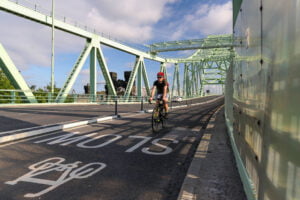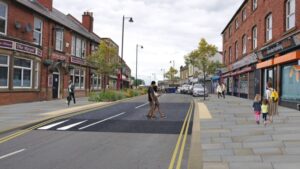A new, free online tool to help transport planners design active travel into towns and cities has been developed by researchers at the University of Cambridge.
The Cambridge team has created the Integrated Transport and Health Impact Modelling Tool (ITHIM), and other models to assess the health effects and trade-offs of different transport scenarios and policies. Typically they look at physical activity, injury risk, and air pollution exposure, sometimes including noise pollution.
ITHIM was first developed for use by researchers and policymakers in England, and has now been taken up and used in different ways in countries across the world. The Cambridge team worked closely with the California Department of Public Health, for example, to help it develop its own version of ITHIM. This was implemented in the San Francisco Bay Area, and in southern and central California. Following its success in California, ITHIM has been implemented by health and transport authorities in at least six other US states.
ITHIM also became the first tool of its kind to be used in low- and middle-income countries. Working with the World Health Organisation (WHO) Urban Health Initiative, the Cambridge team adapted ITHIM for use in countries including Malaysia, Ghana, India and Brazil. It is now shaping debate around transport and health in these countries, enabling collaboration between transport and health practitioners, and aiding local decision-making by quantifying the health benefits of transport interventions.
The researchers found that infrastructure that encourages active travel, can increase the overall amount of physical activity that people do by around 45 minutes per week.
“Our findings add to the growing evidence supporting the case for changing the environment to promote physical activity – by making walking and cycling safer, more convenient, and more attractive,” said Jenna Panter, a Senior Research Associate in the Population Health Interventions programme.
To help planners incorporate active travel, the research team has created the Integrated Transport and Health Impact Modelling Tool (ITHIM) to assess the health effects and trade-offs of different transport scenarios and policies.
“Air pollution levels and the risk of injury from walking or cycling vary massively across the world,” said James Woodcock, Professor of Transport and Health Modelling at the MRC Epidemiology Unit.
“In Cambridge, cycling is pretty normalised, and injury risk and pollution levels are low by global standards. While air pollution is a problem, the harms from the additional pollution you breathe in while exercising are much smaller than the benefits from being physically active.”
The research found that even in a highly polluted environment, doing some physical activity is better than none. “However, people who are active for much of the day, like bicycle delivery riders, will be breathing in a lot of extra pollution and they don’t have much choice about this. By reducing air pollution concentrations we can increase the benefits of physical activity for everyone – and that’s where our tool can help guide policy-makers decisions,” added Mr Woodcock.
Already, some areas have implemented ambitious walking and cycling improvements – and are seeing substantial improvements in physical activity and reductions in injuries. And the economic gains projected from plans now in progress are huge. The health benefits of investments made using the PCT alone equate to a gain of 2,632 life-years and 340,234 fewer days’ sickness absence each year – with a total economic value of approximately £200 million annually.





















